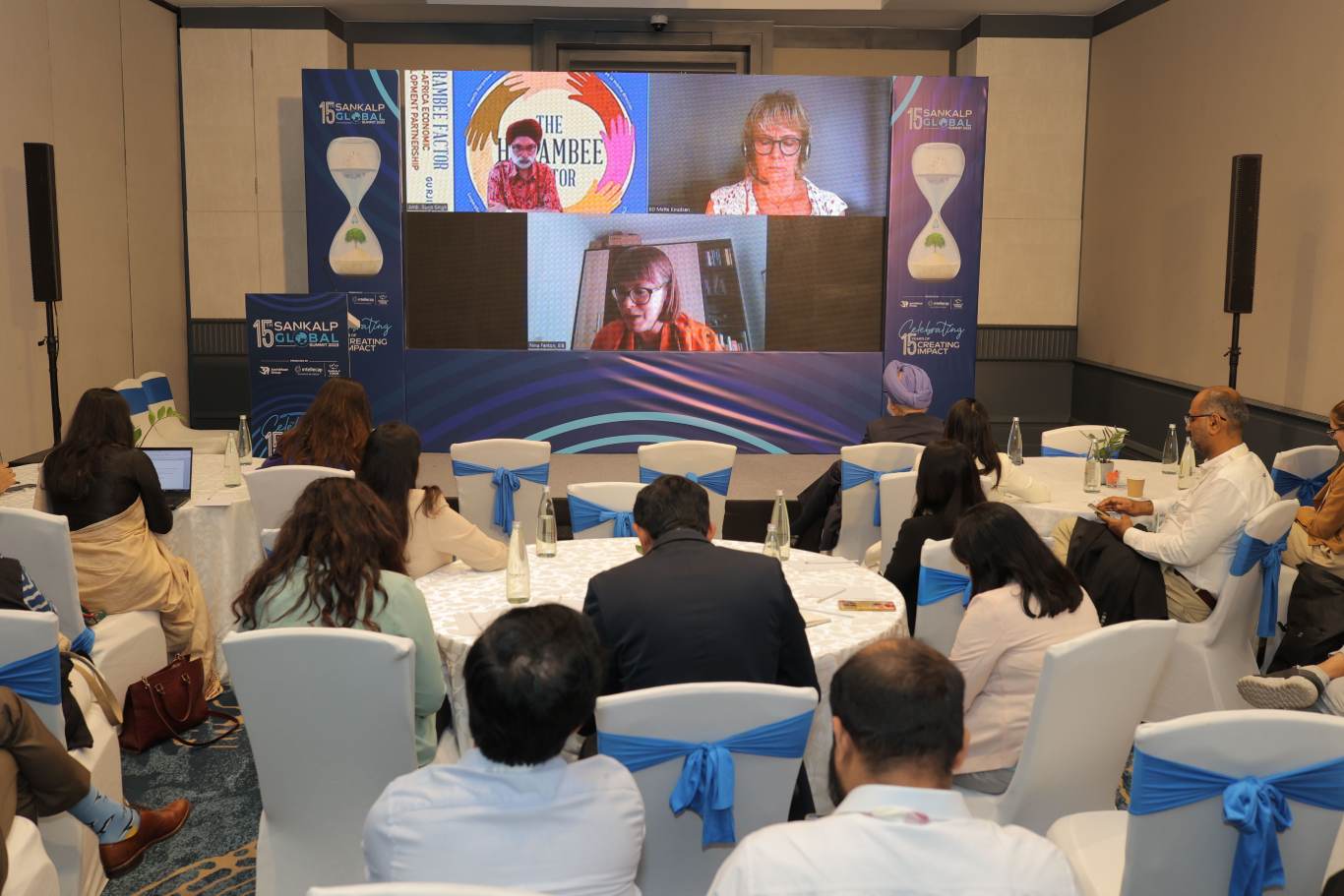

SPEAKERS |
|
Background
Climate finance is referred to as “financial resources and instruments that are used to support action on climate change.” It includes grants from multilateral funds, commercial and concessional loans from financial institutions, sovereign green bonds issued by national governments and capital mobilized through carbon trading and taxes. Although the role of climate finance is instrumental in advancing the green transitions and improving resilience of communities against adversities of climate change, there exists a significant gap in climate finance- especially in emerging economies.
The United Nations Framework Convention on Climate Change (UNFCCC) estimates an annual requirement of $6 trillion until 2030 for 78 countries in advancing climate actions to avoid adverse impacts of climate change. Further, only a fraction of the $630 billion global climate finance mobilized annually goes to the developing and emerging economies. The actual mobilization of climate finance in developing economies was estimated between $21-83.3 billion in 2020. With a gap of $5.37 trillion annually in mobilizing global climate finance to meet the climate targets till 2030, there exists a need to discover strategies for bridging this gap to bolster sustainable development.
Against this backdrop, this session delved into the collaborative efforts of ASEAN body, UNFCCC Regional Collaboration Centre and other bodies to increase climate finance. The session explored the vision behind mobilizing finances for funding climate initiatives and the steps taken to bridge the current gap. Further, the experts of regional bodies provided perspective on strategies that are shaping the path toward a sustainable and resilient future.
Economic impacts of climate transitions
With each of the 8 South Asian economies facing one or more climate related disasters in the past two decades, the region remains one of the most vulnerable to climate shocks. Worsening climate conditions could adversely impact living conditions of 800 million people in South Asia. Similarly, climate change poses a threat in the Africa region. Over 110 million people were affected in Africa due to the climate-related hazards in 2022 leading to $8.5 million worth damages. Ambassador Singh highlighted that ‘the amount of loss in Global South has nowhere been matched by the promises of Global North and West. Although, there is no dearth of finance, the critical concern remains on how and who to channelize finance.’
Role of regional institutions and partnerships in increasing climate finance
Regional institutions have a crucial role to play in mobilizing climate finance due to their understanding of the challenges, local presence and local partnerships. The experts also highlighted that partnerships remain crucial for mobilizing climate finance to enable green growth. Ambassador Mette Knudsen highlighted that the African Development Bank (AfDB) has been providing support to the African region through investments to governments and private sector, through partnership support and through policy and advisory support for advancing green transitions and addressing climate change. She further emphasized that the aim of the AfDB is to promote both economic development and green growth as pursuing green growth objectives yield immense economic and climate benefits.
While highlighting European Investment Bank’s (EIBs) engagements in South Asia, Dr Nina Fenton elaborated that since South Asian economies (India, Bangladesh, Nepal, Bhutan and Sri Lanka) are not member states of EIB, it offers partnerships based on EIB’s alignment of interests with these economies. She emphasized that there is a strong alignment in the South Asian region on climate change related issues and on using climate finance for achieving their climate targets. EIB has made investments in green mobility and renewable energy sectors (committed $1.7 billion) amongst others to advance climate financing in the Global South.
Challenges in mobilizing climate finance
As finance remains a critical barrier for accelerating climate action, the experts delved into the key reasons for the existing challenges in mobilizing climate finance. DSG Satvinder Singh identified the cost of financing as one of the key challenges. Currently the scale of projects in the Global South is small. Multilateral Development Banks (MDBs) such as Asian Infrastructure Investment Bank (AIIB), Asian Development Bank (ADB) and other global investors look at ‘at least half a billion portfolio projects’, thereby making it less attractive for them to invest in small projects due to high operational cost of financing.
While elaborating on EIB’s engagements in Bangladesh, Dr Nina highlighted that ‘even though there exists immense potential, the project proposals are not fully-fleshed out to meet the financing requirements’- thus, bringing out the case of low technical capacities in emerging economies. She further highlighted that there is a significant gap in financing the potential and upcoming sectors including off-shore wind energy and green hydrogen due to high risks of new investments.
Sub-optimal policy and regulatory environment in the emerging economies is another critical challenge. Meeting regulatory and legal requirements is crucial for long-term project sustainability to move the committed amounts. However, in the absence of a conducive policy and regulatory environment in emerging economies, there remain challenges in time bound mobilization of climate finance.
Way forward
There exists significant potential for mobilizing increased amounts of climate finance in emerging economies by addressing the existing challenges deterring its flow. The experts highlighted there is a need for consolidating small projects for improving bankability of projects and reducing operational cost of financing.
Ambassador Knudsen highlighted the need for ‘improving frameworks to reduce risks for mobilizing climate finance’. Innovative financing mechanisms that include risk mitigation instruments such as guarantees could enable de-risking climate investments in emerging economies. In alignment with Ambassador Knudsen, Dr Nina stated that innovative financing mechanisms that envisage technical assistance could be deployed for strengthening regional technical capacities in emerging economies. She further highlighted that ‘bringing in global expertise in potential and upcoming sectors’ could benefit emerging economies. While underlining the role of regional banks in mobilizing climate finance, Stig Traavik emphasized that ‘regional banks could assume higher risks to enable improved flow of climate finance.’
The experts identified the role of the private sector as key in mobilizing climate finance and plugging-in the existing gaps. Ambassador Knudsen pointed out that the ‘Indian private sector could look at Africa’ to mobilize finance for advancing climate actions, thereby fostering regional cooperation.




